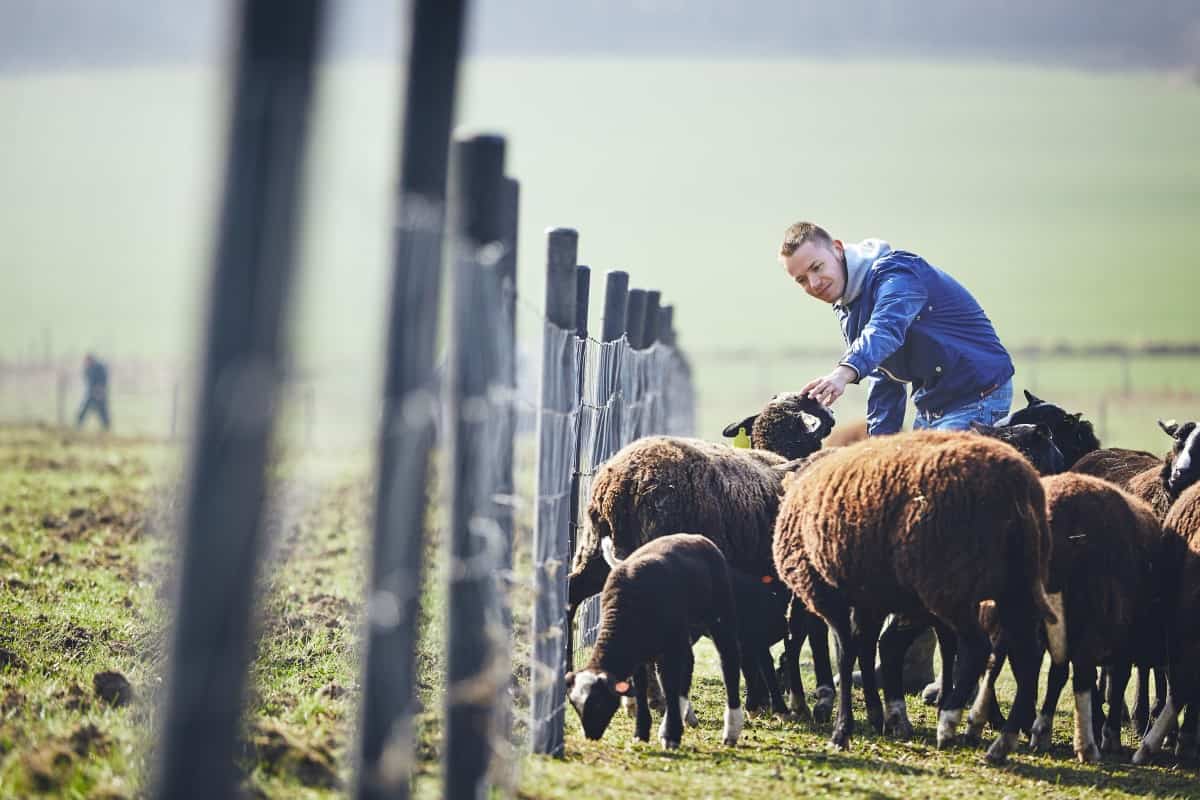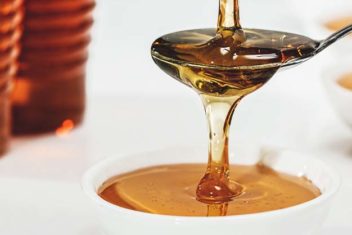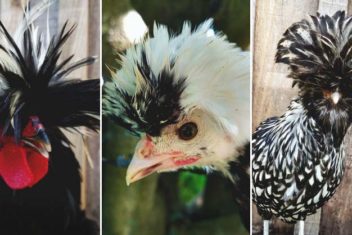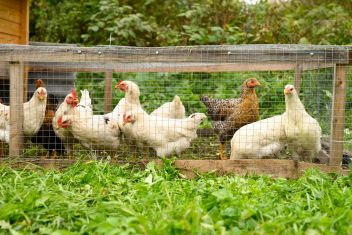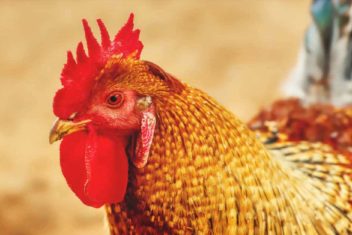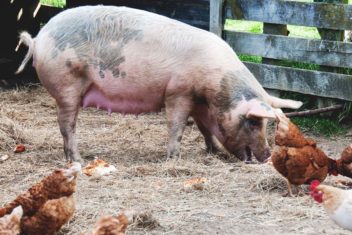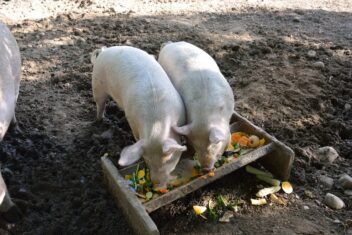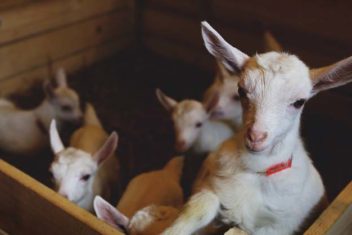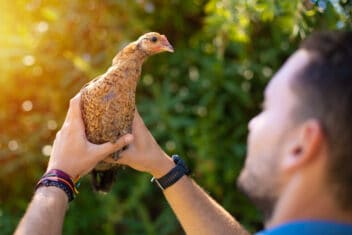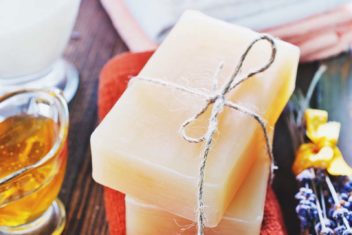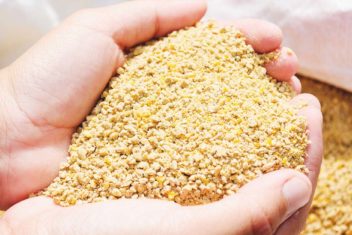If you’re not raising your livestock on pasture, you are truly missing out.
Unfortunately, for most people, raising animals involves putting them in a feedlot setting where they remain all year long. That kind of set-up requires a lot of shoveling of manure, a lot of deworming, and a lot of extra work.
We wanted to raise our animals (sheep, pigs, and chickens) in a healthier, more sustainable way, yet we knew that we didn’t have thousands upon thousands of acres to allow them to graze freely. We only have about 22 acres, so we have to be smart in how we manage our space.
Pasture rotation can be done by anybody who is willing to get a bit creative, from the small scale backyard homesteader to the farmer with hundreds of acres.
Here are some tips on how to get started.
What is Pasture Rotation?
Pasture rotation, also known as rotational grazing, is simply the practice of moving livestock to new sections of a pasture every few days or weeks. In doing so, you can maintain forage that is healthy, fertile, and nutritious.
Normally, a pasture rotation scheme will involve one larger fenced-in area with multiple interior parcels. These are usually divided into permanent or temporary fencing so that you can move your animals easily from one paddock to the next.
Benefits of Pasture Rotation
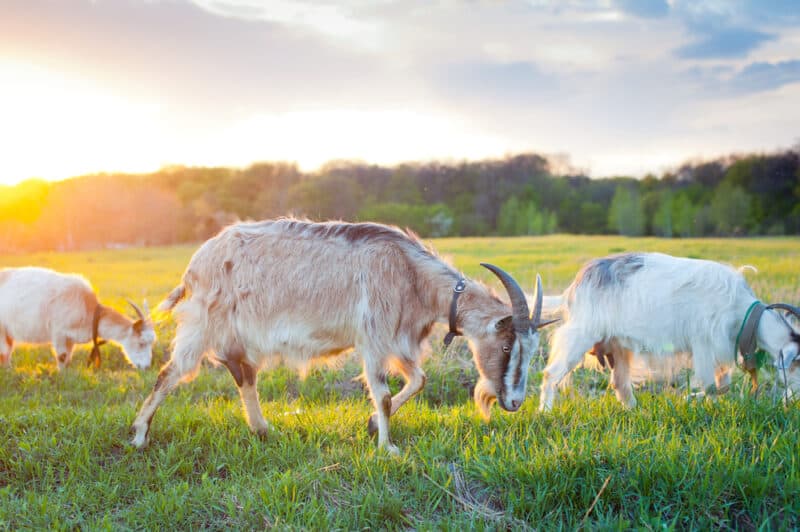
1. Financial Benefit
One of the best reasons to practice good rotational grazing is to reduce your grazing expenses. On the average farm, your feed costs might be up to a dollar per day per animal.
If you plan carefully and manage the pasture properly, you can cut this in half (or potentially more). By giving the plants time to bounce back, you’ll be able to feed less supplemental feed like hay and rely more on natural pasture to do the work for you.
2. Environmental Impact
Unfortunately, grass, clover, and other forage plants can easily become stressed from grazing. It’s not just the grazing habits of the animals that inflict this stress, but also their foot traffic and manure.
When you allow animals to continuously graze a pasture, they’ll eat the most desirable forages first (which varies depending on the type of animal and its preferred foods). They’ll leave some sections of the pasture to overgraze while others remain untouched. They will keep turning to these more palatable sections to eat without giving the plants time to bounce back.
As you might expect, this can cause the desirable plants to die and weeds to take over. This means more work on your part to cultivate and control the land. It often requires the farmer to use more pesticides, fertilizers, and other chemicals as a result.
Therefore, good pasture rotation can help reduce your environmental impact.
3. Animal Welfare
Rotational grazing is simply better for animal health. When you raise animals in confinement or in popular “feedlot” settings, the potential for disease and parasitic infestation are both more likely.
Sheep, in particular, are vulnerable to parasitic infestation as a result of overgrazing. This is due in part to their unique anatomy (it’s rare to find any sheep, even one raised in the most pristine conditions, with zero parasite load) and their grazing habits (they graze very close to the ground).
By giving the pasture time to rest between feeding cycles, you provide time for the parasites to die and for the risk of disease to be reduced. It also gives time for the pasture to bounce back, increasing the nutritional value of the plot.
Planning Rotational Grazing
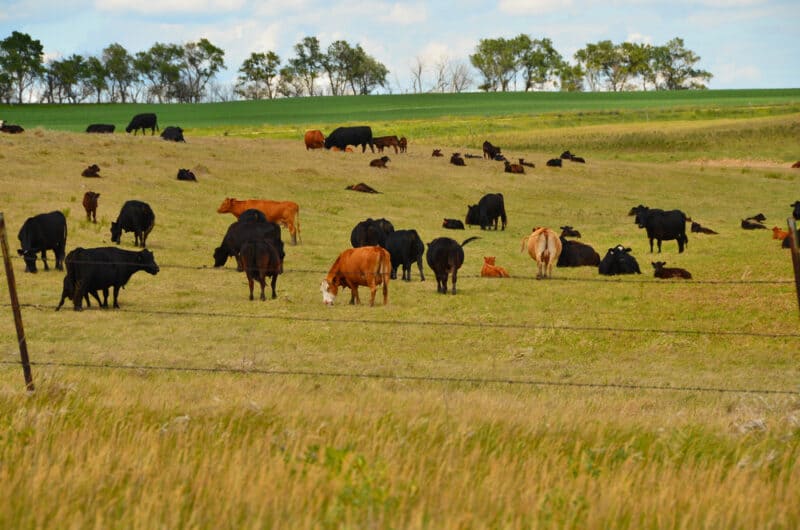
1. Figure Out Your Animal Units
Your first step in pasture rotation should be to figure out the forage requirements of your animals. It’s hard to create a prescribed rotational grazing plan that will work well for all farms since you’ll need to take the breed of animal, size of the herd, and land type into consideration. Other factors to consider include the forage type and climate.
However, in general, you can plan out your grazing plan by designating each animal as an animal unit. As a general rule of thumb, per Penn State Extension:
- One 1000lbs dairy cow (non-gestating, non-lactating) = 1.0 animal unit
- One 2000lbs mature beef bull = 1.7 animal unit
- One 132lbs brood ewe = 0.17 animal unit
- One 300lbs mature ram = 0.42 animal unit
…and so on.
Then, you can multiply out by how many animals you have to figure out your total animal unit requirements.
2. Decide How Many Acres Are Needed
Once you know what kind and how many animals are going to be grazing the land, you can figure out their feed requirements and how many acres you need to provide to meet those feed requirements.
There are a lot of variabilities here, as your pasture requirements will depend on the overall pasture growth. This, of course, is reliant on a variety of factors, including:
- Soil characteristics
- Fertilization
- Climate
- Plant species
- …and other factors
You will need to consider the species of animal you are going to graze as well as the type of plant you wish to grow to feed that animal. Keep in mind that certain plant types are best suited to different types of animals and what best feeds a chicken will not be what best feeds a sheep.
Take some time to research the feed requirements of each species – you may find the following articles helpful in your search.
Feed requirements for:
3. How Large Will Your Paddocks Be?
Once you have the above information figured out, you can determine your paddock sizes. This will depend on the animal units of the herd, how much pasture you have available, and how long you wish to graze.
Paddocks are smaller interior grazing areas that exist within a larger fenced-in area. Often, people use portable fences to accomplish the pasture division process.
In general, you can estimate several hundred pounds of pasture for each inch of height. Again, you can find more detailed information about calculating paddock sizes by visiting Penn State Extension’s website, but the overall calculation is simple. You will multiple the suggested acres per animal unit by the number of animal units in the herd.
4. How Many Paddocks Do You Need?
The number of paddocks you need will depend on how many days you wish to graze your animals in a particular paddock as well as how much rest time you want to give the pasture. Without appropriate rest time, you are at risk of overstressing the forage plants as well as producing the risk for parasites.
The length of time you keep your animals in a given paddock will likely vary depending on the time of year and where you live (as well as what kind of animal you are grazing).
A herd of pigs might be kept in a paddock for just a couple of days during the heat of the summer, while a flock of sheep on the same pasture in the cool, moist conditions of the spring might be able to stay there twice as long.
Also, keep in mind that your pasture’s growth rate is influenced by soil fertility, so your rest periods might even vary from year to year. Be flexible and revisit this decision often!
5. Figure Out Fencing and Water
You will also need to figure out fencing. Fencing will be needed to control animals, not only to prevent them from getting out of the major fenced area but also to keep separate paddocks contained.
The type of animal will dictate what kind of fences are best for you. Sheep, for instance, require extremely high voltages if you use portable electric fences (we use an 8-joule charger). You can make your interior fencing permanent or portable, depending on your grazing goals and landscape.
Don’t forget to factor in water. You will need access to water in each pasture. The average dairy cow requires up to 20-gallons of water a day, while a sheep will need at least two.
6. Adjust As Needed
Chances are, you might not get everything right during the first go around. You will have to adjust your rotational grazing plan as you account for unexpected challenges and circumstances. Of course, your pasture will change regularly, too, with changes in fertility, quality, and forage type impacting where you place your animals.
Special Considerations for…
Sheep
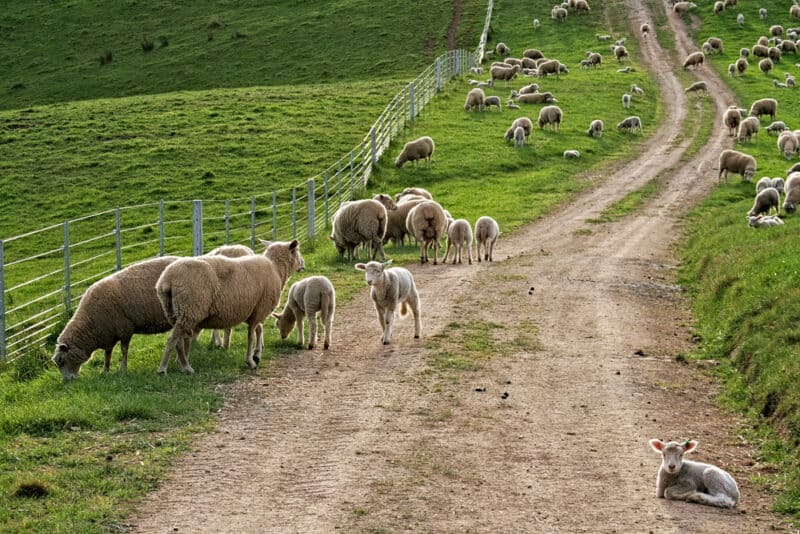
Sheep need to be moved quite often in a pasture rotation. How often you move your sheep will depend on your stocking density as well as the breed of sheep you are raising – some, like Icelandics, will target less desirable forages and even brush rather than just high-quality grasses.
As a result, you may be able to keep them in a paddock for a bit longer. Sheep can generally be stocked quite heavily in a given paddock, but they should be moved often.
They have a high parasite vulnerability and will need to be moved in order to prevent parasite loads from becoming high. As a general rule of thumb, move your sheep often, as you’ll be much more productive and your flock will be healthier, too.
Goats
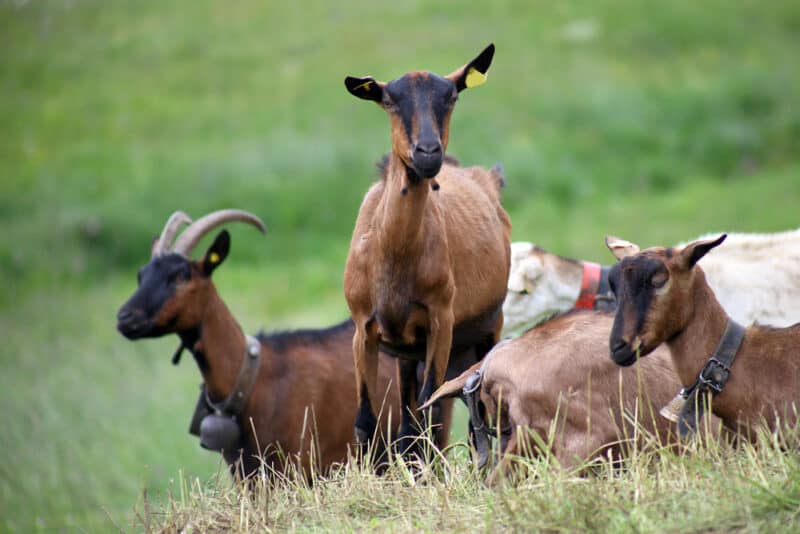
With goats, it’s important to remember that they will eat all kinds of plants, including weeds, grass, leaves, bushes, flowers, and more. You may be able to keep them on less desirable paddocks for longer periods of time.
As with sheep, though, it’s important to keep in mind the parasite load. Worms in goats can reinfest within 2-3 weeks when goats eat where they have already pooped.
Pigs
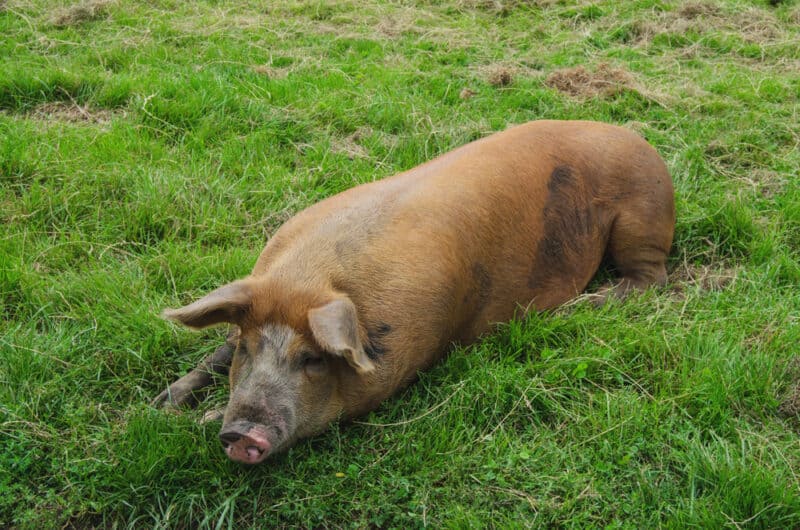
If you’re going to raise pigs on pasture, the key to being successful is in moving them as often as possible. Pigs can decimate a chunk of land if they are left on it for even one day too long. Move them often so that weeds and brush don’t take over (or worse – so that your pasture becomes a mud lot).
Another thing to keep in mind with pigs is that they are very destructive and challenging to keep contained when it comes to fences. They’re quite curious!
Therefore, you will have to make sure your fences are up to snuff (particularly the exterior pasture fences). When raising pigs on pasture, you may also need to supplement with grain or other foodstuffs, as grass isn’t necessarily a complete food source for pigs. There are some breeds, like Kunekunes, that are better at this than others, though.
Chickens
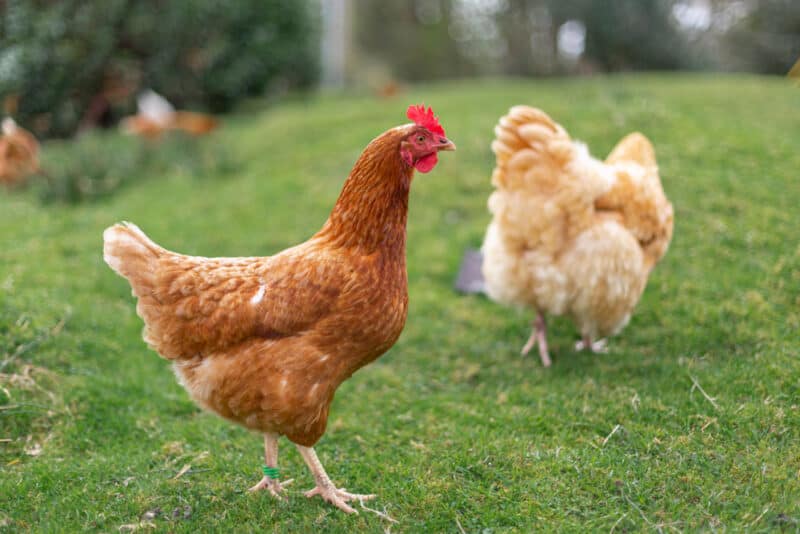
Even chickens can be raised on pasture! You can use a movable coop or chicken tractors to accomplish this goal. In fact, it’s smart to move chickens regularly, as their high-nitrogen poop can easily burn the soil.
You can graze them a bit more frequently than most herbivores, but try not to let the pasture get below 2-inches tall.
Cows
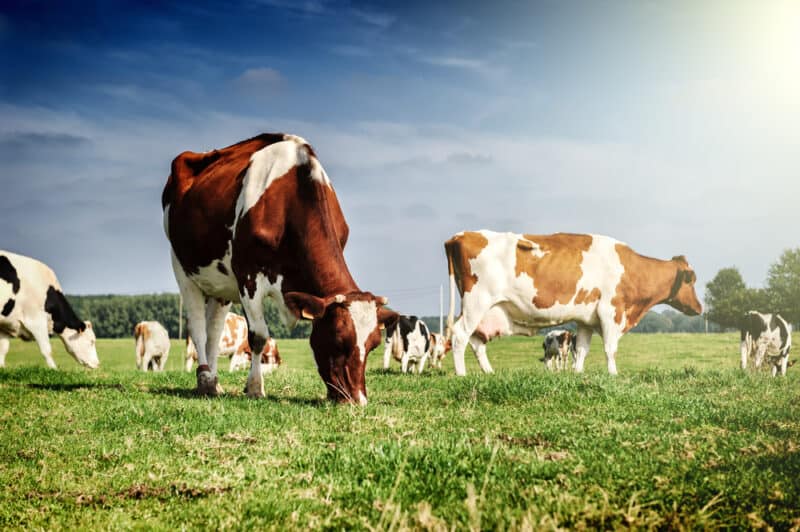
Although cows are certainly not the only animal to produce milk, there’s one consideration you need to make when grazing dairy cows or any other lactating animal. Milk producers need consistent forage quality, so you might need to graze them for shorter periods on any given paddock.
Another tip when grazing cattle is to supplement with protein when the weather is dry. You can use supplement tubs that move with the cattle as they graze. This can encourage them to graze places that they might not otherwise and help spread out their impact over a larger area.
How Often to Rotate Pastures
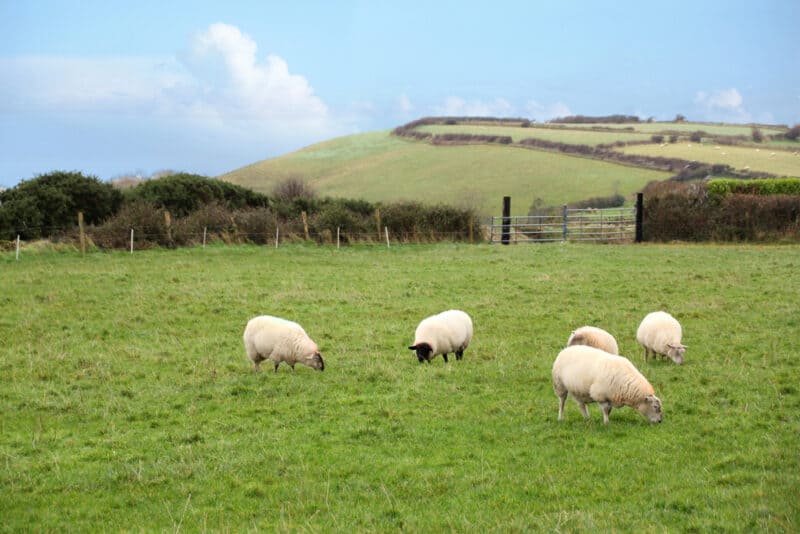
If you fail to utilize your pastures properly, you’re going to have overgrazing of some of the most palatable species and the pasture will regrow poorly.
However, there’s no single answer to how often you should rotate your pastures. You should use the information given to you earlier in the article to determine how often to rotate. You’ll also need to change these “rules” and expectations frequently based on climatic conditions.
For example, the rest period in mid-April may just be 12-15 days. The rest period may be as long as 40 days when you graze in late August since there’s less rain and hotter weather to contend with. Don’t stick doggedly to an idea of when you need to rotate. Instead, be flexible and listen to your land to figure out when it’s time to move.
As a general rule of thumb, grass should be at least 6-inches tall prior to grazing. If you allow livestock in earlier than that, the plants will likely die as their root systems are immature.
Another tip? Once your animals eat half of the plants or grass in a pasture, it’s time to move. Don’t let them totally decimate the pasture.
Again, rely on your plants to tell you when it’s time to move – not the date.
